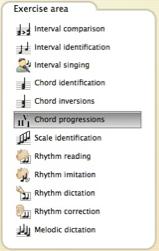Music and Media
I'm a musician so music is a big deal for me. Here's some of the things I do and software I use.
Some of my activities involve creating and publishing music. This is probably of limited interest to many; They just want to listen. Some of these program are discussed in much greater detail in my newsletter articles.
Finale, from MakeMusic, is an expensive, high-end program for creating professional quality sheet music or manuscripts. I've used for years for music publishing. They update it every year but it's expensive so I still use my old version and it works fine. The results are first rate. My computer is connected to an electronic keyboard via a MIDI interface so I can enter notes by playing them on the keyboard. MakeMusic also offer a $10 program, called Finale Notepad, that lets you view and do some simple editing of Finale files.
ABC is a system of music notation that uses ordinary ASCII text to represent the symbols that you would normally write on a music manuscript. It's simple and human-readable. There are many programs for creating, viewing and editing ABC files but my favorite is BarFly. Although not nearly as versatile as Finale (or other notation programs) it's easy to use and the files it creates are plain text, so they are very small. There are millions of ABC music files on the Internet, mostly folk tunes, and they can be exported as MIDI files. The syntax is very simple but, because I use Finale, I've never taken the time to become fluent. I have a friend who can whip out a tune with BarFly in no time.
iTunes: Everyone has it and it's a wonderful program. I use it for music, podcasts, audio books and videos.
Audio Hijack Pro ($32) - captures audio from applications, primarily audio on the Internet.
WireTap Studio ($69) - This is similar to Audio Hijack, but has editing and other features. I got it as part of a bundle and couldn't resist a bargain.
Amadeus Pro ($40) - records and edits audio files. I love this program and used it to convert many tapes/records to digital form. I also have Sound Studio that came with my iBook. There are some free ones, like Audio Recorder and Audacity as well as CD Spin Doctor that comes with Toast.
MediaRage ($30) - manipulate tags. iTunes will do some of this, but MediaRage is much faster and more versatile. It's actually a collection of 18 powerful tools for media enthusiasts and can read and write information stored in MP3, AAC/MP4, FLAC, AIFF, WAVE, BWF, and Ogg Vorbis audio files as well as EXIF (read only) tags in digital images. It can help you easily catalog, organize, sort, and update thousands of audio files.
Tooble (free) was developed by three high school students as a quick way to browse YouTube videos and save them to your drive, iTunes or iPod.
Streaming audio: The three big formats are QuickTime, RealAudio and Windows Media. All have free versions. Windows Media is no longer supported on the Mac, so get the free Flip4Mac plug-in so Quicktime can read the files.
MIDI (Musical Instrument Digital Interface). A machine protocol that allows synthesizers, computers, drum machines and other processors to communicate with and/or control one another. Because MIDI files contain only a series of commands (such as note on, note off), they are very small and efficient. There are literally millions of MIDI files on the Internet. A Canadian has been collecting and digitizing player piano rolls in MIDI format.
Although they can be played in iTunes and with QuickTime Player, I use QMidi ($12) as it lets me play them through my MIDI keyboard/synthesizer and has some other nice features like pitch and key control. Supports Karaoke and multiple playlists so I don't have to clutter my iTunes library with thousands of small MIDI files.
Djay - an iTunes player with variable speed. It used to be free, but now it's $25
 EarMaster Pro 5 ($60) Published by eMedia Music, EarMaster Pro is an ear-training program for musicians and students at all levels. It’s important for all musicians, particularly those playing by ear, improvising or sight-singing. The program is has 651 progressive lessons, both standard and jazz, in 12 areas to train you to recognize intervals, chords, scales and rhythms. It supports MIDI or microphone inputs as well as on-screen controls. You can select individual exercises or use the “tutor” which will start you with simple exercises, grade your performance and take you to the next level when you’re ready. It’s the best of its kind that I’ve seen.
EarMaster Pro 5 ($60) Published by eMedia Music, EarMaster Pro is an ear-training program for musicians and students at all levels. It’s important for all musicians, particularly those playing by ear, improvising or sight-singing. The program is has 651 progressive lessons, both standard and jazz, in 12 areas to train you to recognize intervals, chords, scales and rhythms. It supports MIDI or microphone inputs as well as on-screen controls. You can select individual exercises or use the “tutor” which will start you with simple exercises, grade your performance and take you to the next level when you’re ready. It’s the best of its kind that I’ve seen.
It comes on a CD with both PC and Mac (OS 10.4.11+) versions. There’s a trial version on their web site, and also a school version that runs on a server to support multiple users on a network.